Ethoxylated lanolin
INCI: PEG-75 Lanolin
CAS No. 61790-81-6
Appearance: Pale, viscous, slightly cloudy liquid.
Smell: Mild, pleasant
Yellow color
pH:5,000 - 7,000
KF water: 38,000 - 43,000 %
Acid value: 0.000 - 2.000 mgKOH/g
Saponification Index: 0.000 - 5.000 mgKOH/g
Dioxane Max.:10 ppm
Ethylene oxide Max.: 1 ppm
It is a 50% active ethoxylated lanolin. It is an effective emollient and moisturizer. It is an exceptional conditioner that restores natural oils, making it ideal for formulations for dry skin such as hand soaps, liquid soaps, creams and lotions. Additionally, its shine-enhancing properties make it an ideal candidate for use in products such as shampoos and conditioners.
- BSE/TSE transmission risk: NO
- Contains Genetically Modified Organisms or derived from them (GMO's): NO
- Contains Allergens (Cosmetic Regulation 1223/2009/EC): NO
- Contains CMR substances (76/768/EEC, 1223/2009/EC or CLP 1272/2008/EC): The product contains CMR substances, categories 1 A, 1 B or 2 as defined in Regulation (EC) No. 1272/2008 part 3, Annex VI and in the Cosmetics Regulation (EC) No. 1223/2009:
* Ethylene oxide <1 ppm
* 1,4 Dioxane <10 ppm
* Technically unavoidable CMR impurities resulting from the qualified manufacturing process (alkoxylation)
- It is considered Nanomaterial (Regulation 1223/2009/EC): NO
- Has been tested on animals for cosmetic purposes: NO
- Contains SVHC (Substances Very High Concern) according to ECHA list: NO
- Contains Glycol Ethers (according to Regulation 1223/2009/EC): NO
- Contains Phthalates (according to Regulation 1223/2009/EC): NO
- Contains Lactose (according to Regulation 2000/13/EC): NO
- Contains Gluten (according to Regulation 2000/13/EC): NO
- ISO 16128 (% NATUR. / % NATURAL ORIGIN) 41% / 0%
- Irradiated product NO
Recommended use: 0.5 to 5.0%
It is used as:
-Conditioning agent
-Emollient
-Moisturizing Agent
-Super greasing agent
-Moisturizing
-To give shine / glow
Recommended for:
-Creams, lotions and gels
-Shampoos, Conditioners and detangling products
-Liquid and solid soaps
FAQ
Is the ethoxylation process in lanolin bad?
The ethoxylation process on lanolin is a crucial step taken to convert natural lanolin into a more functional and versatile ingredient for use in cosmetic and personal care products. However, this process has raised some concerns due to the possible formation of potentially harmful by-products.
Ethoxylation is a chemical process in which ethylene oxide is added to a substance to improve its solubility in water and its ability to form emulsions. This is especially useful in cosmetics, as it allows ingredients like lanolin to mix better with other aqueous components in a formulation.
The primary concern with the ethoxylation process is the formation of 1,4-dioxane, a potentially harmful byproduct. 1,4-Dioxane is classified as a possible human carcinogen by the International Agency for Research on Cancer (IARC), and it can also have negative effects in the environment.
However, it is important to note that in the European Union, cosmetic products must comply with Cosmetic Regulation 1223/2009/EC, which sets strict limits for 1,4-dioxane. The maximum concentration of 1,4-dioxane allowed in finished cosmetic products is 10 ppm (parts per million).
The Ethoxylated Lanolin product that we sell at "La Despensa del Jabón" complies with these regulations, and contains a concentration of 1,4-dioxane well below the permitted limit. It is also important to mention that this product does not contain ethylene oxide in concentrations higher than 1 ppm.
Therefore, while the ethoxylation process may have the ability to form potentially harmful by-products, existing regulations and safe manufacturing practices help ensure that products containing ethoxylated lanolin are safe for use.
However, it is always important to use cosmetic products according to the instructions and recommended concentrations, and to consult a health professional if you experience any type of adverse reaction.
Difference Between Ethoxylated Lanolin and Anhydrous Lanolin
Lanolin is a natural product derived from sheep's wool and has been used for centuries for its skin moisturizing and protective properties. There are different types of lanolin, including Ethoxylated Lanolin and Anhydrous Lanolin. Although both derive from the same source, there are key differences between them in terms of their chemical composition and uses in the cosmetics industry.
Anhydrous Lanolin
Anhydrous Lanolin is the purest form of lanolin. The term "anhydrous" means "without water," indicating that this type of lanolin has been processed to remove all water content. It is a pale yellow, waxy substance that resembles fat in its natural state.
Anhydrous Lanolin is highly prized in cosmetics for its emollient properties, which means it can soften and smooth the skin. It is a common ingredient in products such as dry skin creams and lotions, lip care products, and hand care products. Like ethoxylated lanolin, anhydrous lanolin also acts as an occlusive, helping to seal moisture into the skin and protect it from the elements.
ethoxylated lanolin
Ethoxylated Lanolin, on the other hand, has been chemically modified through a process called ethoxylation. This process involves the addition of ethylene oxide to lanolin to improve its solubility in water and its ability to form stable emulsions. The result is a cloudy, viscous liquid that is highly compatible with aqueous formulas, making it ideal for products such as shampoos, hair conditioners, and body washes.
Ethoxylated Lanolin also has emollient and moisturizing properties, but it also has the ability to act as a skin and hair conditioner. This means that it not only softens and smoothes the skin and hair, but also helps restore its natural moisture balance and improves its overall appearance and texture.
In summary
The main difference between Ethoxylated Lanolin and Anhydrous Lanolin lies in their chemical composition and their applications in the cosmetic industry. While Anhydrous Lanolin is ideal for products that require an intensive moisturizing and protective barrier on the skin, Ethoxylated Lanolin is more versatile and can be used in a variety of products, including those intended for hair and skin care.














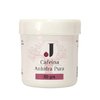
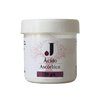
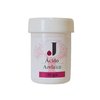
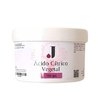
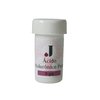
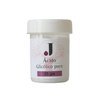
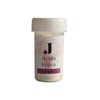
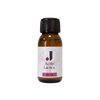
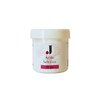

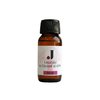
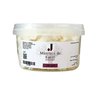
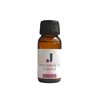
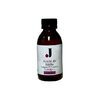
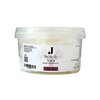

 tienda@ladespensadeljabon.com
tienda@ladespensadeljabon.com  Location
Location (+34 ) 944 657 841
(+34 ) 944 657 841




 (+34 ) 608 651 314
(+34 ) 608 651 314